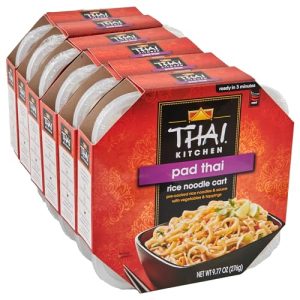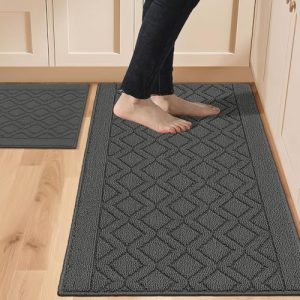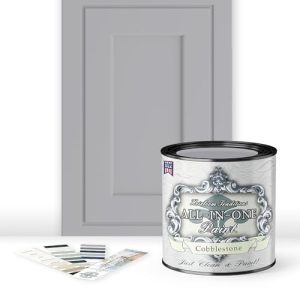Is your kitchen sink cabinet a cluttered mess that makes finding what you need a daily struggle? You’re not alone.
Many people underestimate how much space is wasted under the sink because it’s often packed with cleaning supplies, tools, and random items. But imagine opening that cabinet and instantly spotting exactly what you need—no digging, no frustration. You’ll discover simple, practical steps to transform your chaotic cabinet into a neat, organized space.
Ready to reclaim your kitchen and make your life easier? Let’s dive in and get your kitchen sink cabinet in order.
Assessing Your Space
Assessing your kitchen sink cabinet space is the first step toward better organization. Understanding the area helps you plan smart storage solutions. This step avoids clutter and wasted space. A clear view of the cabinet’s size and challenges sets the stage for success.
Measure Cabinet Dimensions
Use a tape measure to find the cabinet’s width, height, and depth. Note any obstacles like pipes or supports inside. Write down these numbers to guide your storage choices. Accurate measurements prevent buying items that don’t fit.
Identify Problem Areas
Look for spots where clutter builds up or items are hard to reach. Check for moisture or leaks that can damage stored things. Notice if certain tools or cleaners crowd the space. Mark these problem areas to target them during organizing.
Clear Out Existing Items
Empty the cabinet completely to see everything inside. Sort items into groups: keep, toss, or relocate. Clean the cabinet’s interior to remove dirt and dust. Clearing out makes it easier to design a tidy layout.
Choosing Storage Solutions
Choosing the right storage solutions can transform the space under your kitchen sink. This area often becomes cluttered with cleaning supplies and tools. Good storage options help keep everything neat and easy to reach. Select solutions that fit your cabinet size and meet your needs. Think about accessibility, space-saving, and ease of use.
Use Stackable Bins
Stackable bins maximize vertical space under the sink. They create layers for storing different items separately. Clear bins allow quick identification of contents. Use labels on each bin for faster access. These bins help keep small items organized and prevent spills.
Install Pull-out Drawers
Pull-out drawers offer easy access to items at the back. They slide smoothly, reducing the need to bend or reach deep. Choose drawers with dividers to separate supplies. This setup keeps everything visible and prevents clutter. Pull-out drawers work well for bottles and cleaning tools.
Add Adjustable Shelves
Adjustable shelves let you customize space inside the cabinet. Change shelf heights to fit tall or short containers. This flexibility helps use every inch efficiently. Shelves keep items off the cabinet floor, protecting them from water damage. They also make cleaning under the sink easier.
Incorporate Hanging Organizers
Hanging organizers use the cabinet door or walls for extra storage. Hooks and pockets hold brushes, gloves, and spray bottles. This method frees up shelf and floor space. Hanging organizers keep frequently used items within easy reach. They are simple to install and remove.
Sorting And Categorizing Items
Sorting and categorizing items under the kitchen sink cabinet makes the space neat and easy to use. It helps find supplies quickly and keeps everything in order. Start by grouping items that belong together. Then, remove anything old or no longer useful. Finally, use clear labels to identify each container. This simple process saves time and reduces clutter.
Group Similar Supplies
Put cleaning products like sprays and sponges together. Keep dish soaps and brushes in one area. Store trash bags and recycling bags in another spot. Grouping items by use helps find what you need fast. It also prevents mixing different supplies.
Discard Expired Products
Check expiration dates on cleaning liquids and sprays. Throw away bottles that are old or empty. Expired products can lose strength or become unsafe. Removing these items frees up space. It also keeps your cabinet fresh and safe.
Label Containers Clearly
Use simple labels on boxes and bins. Write the name of the items inside in large letters. Clear labels help everyone in the home find supplies easily. They keep the cabinet organized over time. Change labels if you move items to new containers.
Maximizing Vertical Space
Maximizing vertical space under your kitchen sink can transform a cramped, cluttered cabinet into a neat and functional storage area. Instead of just spreading items across the bottom, think upward. This approach not only increases your storage capacity but also keeps things easy to find and reach.
Use Tension Rods
Tension rods are a simple tool to add an extra layer of storage vertically. You can place a rod across the cabinet to hang spray bottles, freeing up the floor space below. This keeps your cleaning supplies organized and visible, so you won’t waste time digging around.
Try using multiple rods at different heights if your cabinet is tall. This creates separate zones for different items, making the most of every inch.
Attach Hooks Inside Doors
Don’t overlook the inside of your cabinet doors. Adding hooks here can hold small tools, gloves, or brushes. This keeps often-used items within easy reach without cluttering the main space.
Think about what you use most and hang those items where you’ll see them every time you open the cabinet. Have you noticed how much easier it is to grab a cleaning glove when it’s right there on the door?
Utilize Wall-mounted Baskets
Wall-mounted baskets inside the cabinet offer additional storage without taking up floor space. These baskets are perfect for storing sponges, scrubbers, or even extra trash bags.
Mount them at varying heights to keep things organized and accessible. This method keeps small items contained and prevents them from getting lost or messy under the sink.
Maintaining Cleanliness
Clear the space under the kitchen sink before sorting items by category. Use bins or baskets to separate cleaning supplies and keep everything easy to find. Wipe the cabinet regularly to prevent dirt and moisture buildup.
Maintaining cleanliness under the kitchen sink is essential for a tidy home. This often-neglected space can become a cluttered mess without proper care. A clean cabinet not only looks better but also functions efficiently. Keeping it organized prevents odors and potential pest issues.Use Waterproof Liners
Place waterproof liners at the bottom of the cabinet. They protect against spills and leaks. Liners are easy to wipe clean. Choose a liner that fits your cabinet size. This simple step extends the cabinet’s lifespan.Schedule Regular Cleanups
Set a monthly reminder for a quick cleanup. Remove all items and wipe the surfaces. Check for expired or damaged products. Regular cleanups keep the area fresh and organized. Consistency is key to maintaining order.Avoid Moisture Build-up
Moisture invites mold and mildew. Ensure pipes are leak-free and dry. Use a small dehumidifier if needed. Keep the cabinet door slightly open for air circulation. These measures prevent moisture-related problems.Safety And Accessibility
Organizing the space under your kitchen sink goes beyond just tidying up; it’s about making sure everything is safe and easy to reach. This area often stores cleaning chemicals and tools, which can be hazardous if not handled properly. Balancing safety with accessibility ensures you can grab what you need quickly without risking harm to yourself or others.
Store Chemicals Safely
Keep all cleaning products and chemicals in their original containers with labels intact. Avoid mixing different chemicals in one place to reduce the risk of dangerous reactions. Use a sturdy plastic bin or caddy to group these items together, so you can easily remove them if needed.
Consider adding a spill-proof mat to catch leaks or drips. This extra layer protects your cabinet and makes cleaning easier. Have you checked recently if any containers are damaged or leaking? Replacing them promptly prevents accidents.
Keep Frequently Used Items Accessible
Store items you use daily, like dish soap or sponges, at the front of the cabinet. Use small baskets or trays to keep these essentials organized and easy to pull out. This helps avoid digging through clutter every time you need something.
Install pull-out shelves or sliding drawers if your cabinet is deep. These make accessing items in the back hassle-free. Think about what you grab most often—does it sit where you can reach it without effort?
Childproof The Cabinet
If you have children, securing your under-sink cabinet is crucial. Use childproof locks or latches to block access to harmful products. These devices are simple to install and provide peace of mind.
Place dangerous items in a locked box inside the cabinet for double protection. Teaching kids about the dangers of these products also helps, but physical barriers are your best defense. How confident are you that your cabinet is safe from little hands?
Frequently Asked Questions
How Do I Start Organizing Under The Kitchen Sink?
Begin by emptying the cabinet completely. Clean the space thoroughly. Sort items into categories like cleaning supplies and tools. Decide what to keep or discard before organizing.
What Storage Solutions Work Best Under Kitchen Sinks?
Use stackable bins, pull-out drawers, and adjustable shelves. Consider tension rods for hanging spray bottles. Clear containers help visibility. Choose moisture-resistant materials for durability.
How Can I Prevent Moisture Damage Under The Sink?
Place a waterproof liner or mat at the cabinet base. Fix any leaks promptly. Keep cleaning products sealed tightly. Use moisture absorbers to reduce humidity and prevent mold.
What Items Should I Keep Under The Kitchen Sink?
Store frequently used cleaning supplies, sponges, and trash bags. Avoid placing food or hazardous chemicals there. Keep items you access regularly within easy reach for convenience.
Conclusion
Organizing the kitchen sink cabinet saves space and reduces clutter. Clear containers and labels help find items quickly. Use shelves and hooks to keep cleaning supplies neat. Regularly check and remove expired products for safety. A tidy cabinet makes kitchen tasks easier and faster.
Start small and build a system that works for you. Enjoy a clean, functional space every day. Simple steps lead to lasting order under your sink.

Sophie Hartwell is the founder of KitchenQuik.com, where she shares kitchen tips, smart cooking hacks, and the best product picks to make everyday cooking easier and more enjoyable.




